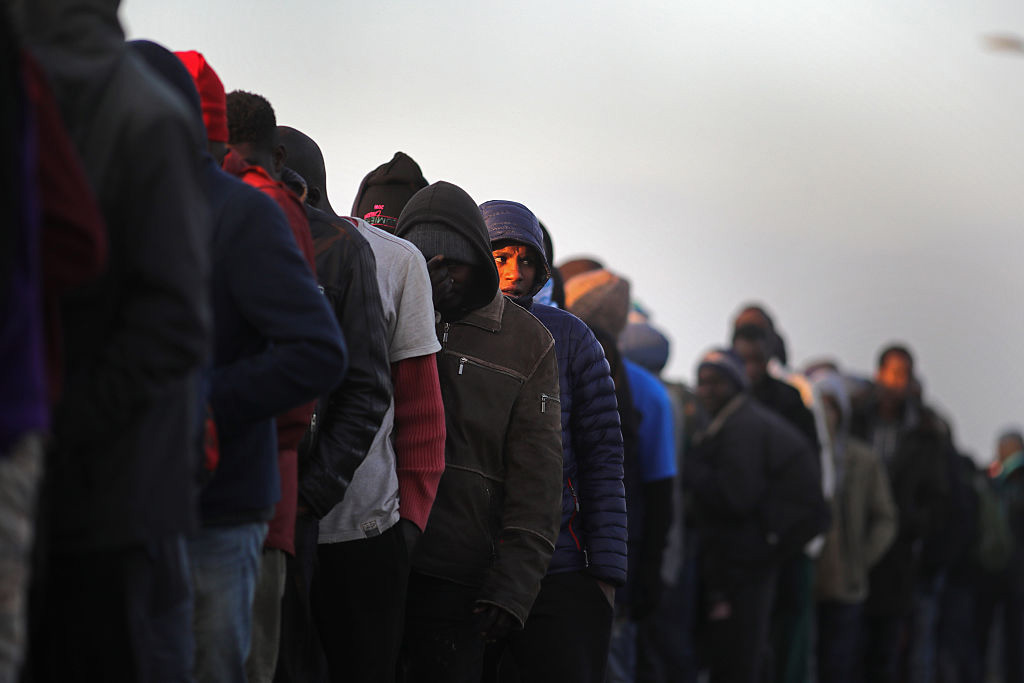The most powerful influences on human health are not the foods we eat or whether we have access to medical care, but how societies are organized, how power is distributed, and how some people are better positioned to make healthy choices than others, decades of public health research have shown.
These “upstream” factors are at the heart of Syndemics, a field of applied health research with roots in medical anthropology. UConn professor of anthropology Merrill Singer coined the term – a combination of “synergy” and “epidemic” – in the 1990s, and authored a 2009 textbook on the concept. Last month, the leading British medical journal, The Lancet, published a special series on the topic, featuring papers by Singer and UConn assistant professor of anthropology Sarah Willen, among others. The series grew out of a 2015 workshop co-sponsored by the Research Program on Global Health and Human Rights, of which Willen is director, at UConn’s Human Rights Institute.
She and an interdisciplinary team of researchers with an interest in migration co-authored the third of three papers in the series. Drawing on a variety of case studies, they consider how an approach that combines insights from syndemics and human rights can advance research, public health, and clinical care for migrant populations – all growing concerns in the face of rising anti-immigrant politics and policies in the United States and abroad.
In a recent interview with UConn Today, Willen discusses the significance of the series, her paper, and this innovative way of studying and confronting health inequities.
Q. How do these ‘upstream’ macro-social forces influence how diseases come together in disadvantaged populations?
A. People facing social disadvantage are more likely to get sick and face multiple, co-occurring health conditions – what physicians call “co-morbidities,” and under conditions of social vulnerability, these co-morbidities are likely to yield worse outcomes than each condition would on its own. Among people and communities already weakened and vulnerable for social and political reasons, the result is a downward health spiral, or what Merrill Singer and others have called, a “negative feedback loop.” The syndemics framework helps us see all of these connections, understand the relationship between “upstream” factors (which influence how society is organized) and downstream” factors (like access to healthy food and health care), and find opportunities to take action in order to prevent these feedback loops and downward spirals from happening in the first place.
Q. The case studies in your paper illustrate the various kinds of syndemic vulnerability that migrants currently face around the world, including adults living in a dangerous unauthorized refugee camp in Europe and migrant children facing indefinite incarceration by the Australian government. Which of the studies best illustrates these health inequities, do you think?
A. The one that hits closest to home, and that draws on the work of medical anthropologist Sarah Horton, involves a 42-year old Salvadoran man who died after working all day picking watermelons in 115 degree heat on a farm in California. Like more than 75 percent of the people who grow and harvest our food in the United States, he came here as an immigrant and, like more than half of the farmworkers in this country, he lived in the U.S. without authorization. … Yet we typically don’t think about how farms that hire farmworkers without papers are not described as “illegal.” Instead, that pejorative is saved for the weakest link in the chain: migrant farmworkers themselves. Nor do we think about the risks and rights violations involved in the daily exposure of migrant workers to extraordinary temperatures and pesticides, often without safety measures and against state and national occupational safety regulations. … Did you know, for instance, that farmworkers often are forbidden to bring their own water to work, officially as a matter of food safety? These are conditions of syndemic vulnerability, and they involve systematic violations of migrants’ human rights. Under circumstances like these, it should come as no surprise that simply getting up and going to work every day puts migrant farmworkers at considerable health risk, including the synergistic risks of kidney disease, heatstroke, cardiovascular disease, diabetes, musculoskeletal disorders, and mental health concerns – all so consumers can enjoy lower prices for produce.
Q. What is the overarching message or purpose of The Lancet series on syndemics?
A. On one level, the series showcases some of the ways in which medical anthropology can advance both public health and the provision of clinical care. As medical anthropologists, we see many ways that a syndemics framework can guide clinicians, public health professionals, policy makers, civil society advocates, researchers, and other stakeholders toward new insights, tools, and collaborative strategies for combating health inequities in multiple domains at multiple levels.
Our paper puts syndemics, with its roots in medical anthropology and public health, in a conversation with the field of health and human rights, which has roots in international law. We argue that a combined syndemics/health and human rights approach can provide clinicians and other key stakeholders with concrete insights, tools, and strategies to help:
- Recognize and map the impact of upstream determinants on health;
- Identify opportunities for upstream intervention;
- Work collaboratively to tackle the structures, institutions, and processes that cause and exacerbate health inequities.
One of our strongest claims is that health is about far more than just “downstream” factors such as individual behavior and clinical care; it’s also about power and politics. From a combined syndemics/health and human rights approach, there’s no doubt whatsoever that achieving justice in health will require a savvy understanding of politics and a broad array of actions that can promote both social and political change. Our hope is that the series will become a resource for clinicians, public health professionals, and health educators who are accustomed to seeing the shocking health effects of social inequality in their daily work, and who are looking for concrete, specific things they can do differently to promote justice in health.



